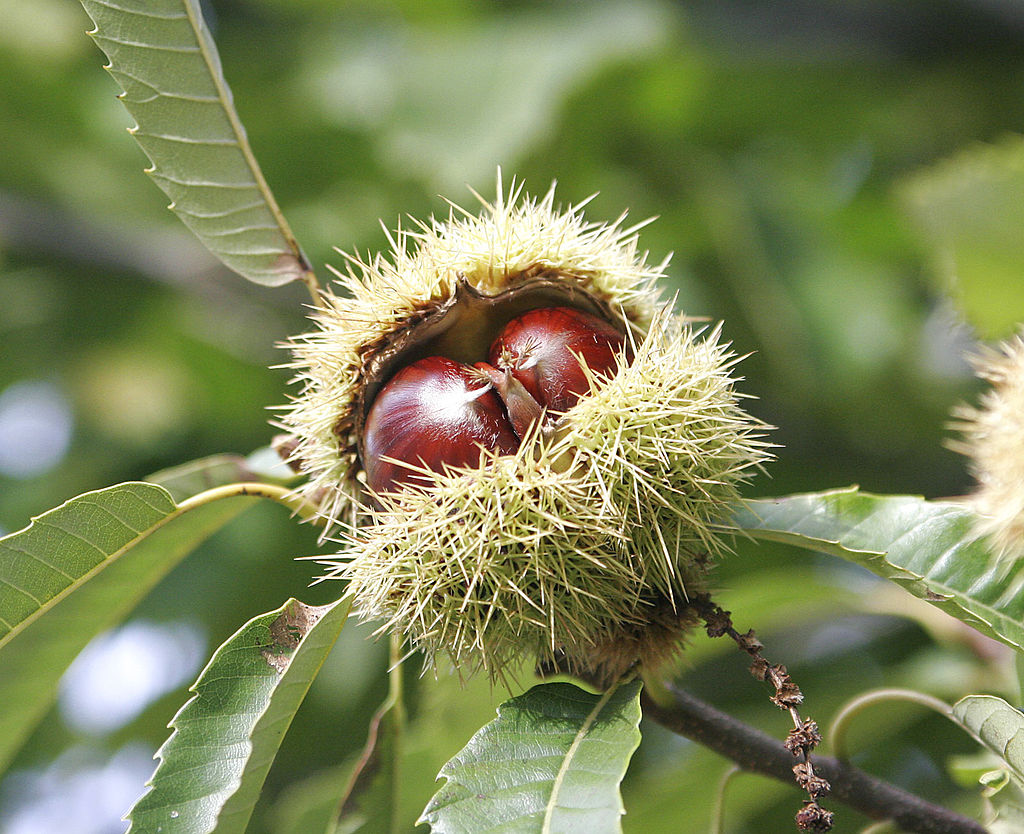
Also called sweet chestnut, Spanish chestnut, and European chestnut, this deciduous tree is native to mountainous woods in southern Europe and Asia Minor and is a member of the beech family, Fagaceae, that also includes oak. Pollen data suggests that the chestnut was associated with human activity in Anatolia, northeastern Greece, and southeastern Bulgaria about 2100-2050 BC. The ancient Greek philosopher, Theophrastus (died c 287 BC), comments on the use of chestnut wood as timber and charcoal, and notes that the fruit is nourishing but causes digestive problems. The ancient Roman naturalist, Pliny the Elder (died 79 BC) says that the chestnut came from Casthanea, a town in Thessaly Magnesia, located on the Pagasetic Gulf, a bay of the Aegean Sea, and commented that it was surprising “that Nature should have taken such pains thus to conceal an object [the nut] of so little value.” Carbonized chestnuts were found in a Roman villa at Torre Annunziata that was destroyed by the eruption of Mount Vesuvius in 79 AD. Photo Credit fir0002 Wikipedia

Chestnut trees grow up to 95′ and have a straight trunk up to 7′ in diameter with branches starting low to the ground. The dark brown bark is often marked by a net-like pattern with deep grooves running up the trunk. The oblong to lanceolate leaves are 6-10″ long, and have coarsely serrated margins and 20 pairs of prominent parallel veins. They are slightly furry, lighter on the underside and turn yellow in the fall. From early to mid summer, tiny dense clusters of yellowish-green, bisexual catkins appear on the current year’s growth. Each bisexual catkin is 4-8″ long and has male flowers in the upper portion and fewer female catkins below. By October, pollinated female flowers produce clusters of 3-7 brown edible nuts held in a spiny husk.
Size: 80-100” H x 30-50′ W
Light: Full Sun
Soil: Average, medium moist, well drained, neutral to mildly acidic; tolerates poor soil, maritime exposure and drought (once established) but does not tolerate alkaline soil
USDA Hardiness Zones: 5-7
Photo Credit: fir0002 Wikipedia